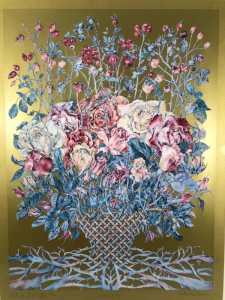 The Yogabliss on-line Moving into Meditation classes met this morning. Today we felt the presence of all our relations. We contemplated our human and more than human kin. Nature functions cooperatively in the great community of Earth life. We sustain our communities with caring. To care is to be vulnerable. To be vulnerable is to embrace Life. We plant seeds of caring. We nurture them with acts of courageous vulnerability.
The Yogabliss on-line Moving into Meditation classes met this morning. Today we felt the presence of all our relations. We contemplated our human and more than human kin. Nature functions cooperatively in the great community of Earth life. We sustain our communities with caring. To care is to be vulnerable. To be vulnerable is to embrace Life. We plant seeds of caring. We nurture them with acts of courageous vulnerability.
Our practice was informed by the sixth principle and practice of Rhonda Fabian’s article, Engaged Ecology: Seven Practices to Restore Our Harmony with Nature. The sixth principle: Nature functions cooperatively. The sixth practice is thriving as a community.
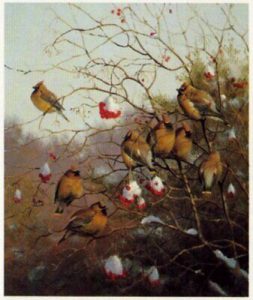 We drew inspiration from poet philosopher, David Whyte. In his beautiful essay on Courage he reminds us that “courage is the measure of our heartfelt participation with life, with another, with a community, a work; a future.”
We drew inspiration from poet philosopher, David Whyte. In his beautiful essay on Courage he reminds us that “courage is the measure of our heartfelt participation with life, with another, with a community, a work; a future.”
We heard Planting Instructions by Rev. Margaret Anne Ernst. Reverend Ernst is a writer, community organizer, and minister ordained in the United Church of Christ. You can find more of her socially engaged writing on her blog site: Planted More Deeply.
We need to feel our connectedness – with each other and also that sense of true belonging inside. In the rests and pauses from our busyness we can feel what is true. In time we can rekindle our devotion to what we hold most dear. Feel yourself arriving, the physical sensations of being alive. As your body relaxes your breath becomes lighter; sometimes there are pauses between the exhalation and the inhalation. Can you let yourself be curious about the utter stillness between breaths and then the breath hunger that urges the body to breathe again? Feel the miracle of breath naturally returning again and again.
Sense your heart’s response to this stillness. Feel Earth calmly abiding,supporting you in silence. In the next in coming breath explore a gradual letting go. Feel all the sensations of this ongoing support and “the touchable rawness of life” the very real vulnerability with which we live. In his beautiful essay on Courage poet David Whyte writes:
 This experience … where the touchable rawness of life becomes part of the fabric of the everyday, and a robust luminous vulnerability, becomes shot through with the necessary, imminent and inevitable prospect of loss . . . Walking the pilgrim edge . . . is the hardest place to stay, to breathe . . . and make a world . . . to be active. . . : aware of our need to be needed, our wish to be seen, our constant need for help and succor, but inhabiting a world of luminosity and intensity, subject to the wind and the weather, surrounded by the music of existence, able to be found by the living world and with a wild self-forgetful ability to respond to its call when needed; a rehearsal in fact for the act of dying, a place where inside and outside can reverse and flow with no fixed form.
This experience … where the touchable rawness of life becomes part of the fabric of the everyday, and a robust luminous vulnerability, becomes shot through with the necessary, imminent and inevitable prospect of loss . . . Walking the pilgrim edge . . . is the hardest place to stay, to breathe . . . and make a world . . . to be active. . . : aware of our need to be needed, our wish to be seen, our constant need for help and succor, but inhabiting a world of luminosity and intensity, subject to the wind and the weather, surrounded by the music of existence, able to be found by the living world and with a wild self-forgetful ability to respond to its call when needed; a rehearsal in fact for the act of dying, a place where inside and outside can reverse and flow with no fixed form.
We can sense vulnerability in ourselves, humans and more than humans. Together we stay, we breathe, we make a world. We walk the “pilgrim’s edge” between the many crises the world is facing today. We are aware of our need to be needed. Together we can cultivate a “wild self-forgetful ability” to respond to our living world.
Nature functions cooperatively. This is the sixth of Rhonda Fabian’s Seven Principles and Practices for Engaged Ecology. The practice is thriving as a community. Rhonda writes:
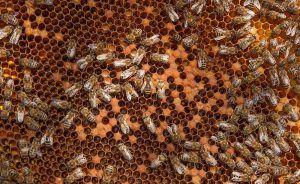 By looking at Nature, we can learn ways that plants, animals, and other living things think and act cooperatively. . . . Sustainability is a community practice. The quality of relationships in any living community is determined by its collective ability to survive and thrive.
By looking at Nature, we can learn ways that plants, animals, and other living things think and act cooperatively. . . . Sustainability is a community practice. The quality of relationships in any living community is determined by its collective ability to survive and thrive.
Rhonda sets forth the practice of thriving as a community in the form of vows:
. . . We will practice coming together with groups of neighbors and friends to collectively seek ways to make our communities more healthy and resilient. . . . By training ourselves in the practice of deep listening and positive speech, we will arrive at shared understanding in our community. Together . . . We can . . . use limits as a means to strengthen community and sharing. We can learn from Nature to creatively use and respond to the changes taking place in our community and in the world.
Every week we come together to practice deep listening, positive speech and understanding. We can bring these practices to the crises we face in communities of caring. Right now we can reflect on the slow, small solutions that are available to us where we live. Right now we can consider poet Margaret Anne Ernst’s Planting Instructions:
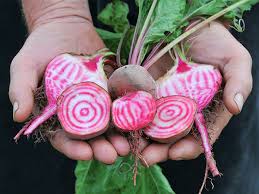 Tell me what you’ll turn into a garden
Tell me what you’ll turn into a garden
when things get hard.
Tell me which abandoned salt mine
you’ll turn into a wild bed of roses
laced with dancing gooseberries,
covered in wasteful morning dew.
[ . . .]
Tell me which abandoned memory
you will plant with sunflowers
to attract pollinators and detox
the contaminated ground.
Tell me which wildflowers you’ll plant
on the bridge of your nose
in a lattice between your eyes
until all you see is beauty.
Tell me what seeds you’ll sow
in a dotted line in the path
between you and the person
you last hurt,
enough space between each
to breathe and make shade
for beetles and crickets
to cool underneath.
[ . . . ]
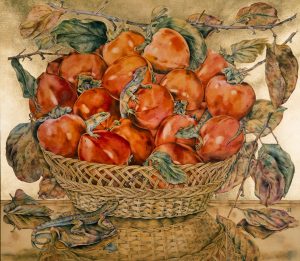 Tell me which journal entries
Tell me which journal entries
and New Year’s resolutions
or stories of self-contempt
you’ll use in the compost
for a patch of tomatoes
that will catch the sun in July,
where you’ll gently teach your granddaughter
how to take from the earth.
Tell me what fruit will grow on your tongue
when you say what you have needed to say
all this time. When you don’t hold back.
When you live into your vegetable nature.
When you become the soil
for a new world.
Rest your body on Earth’s body. Feel and listen deeply to the quiet slow pulsing music of life. Receive this breath, this moment. This experience is a gift and it is also the fruit of what we have planted over the course of our lives. We can consider all that we have grown and what we are ready to compost. Lying close to Earth we can explore our “vegetable nature” which, in time, will become “the soil for a new world.” Rhonda Fabian writes:
For elders like me, there is restitution to be made, an inner and outer reckoning . . . The least I can offer now is my full being, in service to Life for all the days I am given. For young people, the test is far more severe. They know that a dark night of the world soul lurks on the horizon, to be endured and ultimately transcended, only by the wildest love and most creative, painful birth-effort imaginable. . . . Let us focus our loving attention on all children and work to protect all beings.
 As you rest on Earth’s body you can recall your relations in family and beyond. Notice how you feel, bringing them into your heart and mind one by one. How do you offer your full being, your loving attention? Can you include those relationships you’ve been turning away from? Can you open to whatever arises in response to contemplating the pain of our human and more than human relations? We respond by expressing care and compassion for ourselves and each other in this moment. We can practice this response in our daily lives. We can recognize every encounter as an opportunity to care.
As you rest on Earth’s body you can recall your relations in family and beyond. Notice how you feel, bringing them into your heart and mind one by one. How do you offer your full being, your loving attention? Can you include those relationships you’ve been turning away from? Can you open to whatever arises in response to contemplating the pain of our human and more than human relations? We respond by expressing care and compassion for ourselves and each other in this moment. We can practice this response in our daily lives. We can recognize every encounter as an opportunity to care.
This call to care brings us back to David Whyte’s words on Courage:
Courage is the measure of our heartfelt participation with life, with another, with a community, a work; a future. To be courageous is not necessarily to go anywhere or do anything except to make conscious those things we already feel deeply and then to live through the unending vulnerabilities of those consequences. To be courageous is to seat our feelings deeply in the body and in the world: to live up to and into the necessities of relationships that often already exist, with things we find we already care deeply about: with a person, a future, a possibility in society, or with an unknown that begs us on and always has begged us on. To be courageous is to stay close to the way we are made.
 “To be courageous is . . . to make conscious those things we already feel deeply . . . to live through the unending vulnerabilities . . . [they reveal.] To be courageous is to seat our feelings deeply . . . to live up to . . . [the] relationships . . . with things we . . . . care deeply about. . . . “ To care is to be vulnerable. To be vulnerable is to embrace Life. We plant seeds of caring. We nurture them with acts of courageous vulnerability.
“To be courageous is . . . to make conscious those things we already feel deeply . . . to live through the unending vulnerabilities . . . [they reveal.] To be courageous is to seat our feelings deeply . . . to live up to . . . [the] relationships . . . with things we . . . . care deeply about. . . . “ To care is to be vulnerable. To be vulnerable is to embrace Life. We plant seeds of caring. We nurture them with acts of courageous vulnerability.

